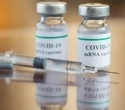The formation of autoantibodies has been linked to the infection with the severe acute respiratory syndrome coronavirus 2 (SARS-CoV-2). While some of these reactivities were already present, the researchers noticed some unexpected ones that appeared right after the infection started.
Coronavirus disease 2019 (COVID-19) symptoms and severe sickness are prevented with SARS-CoV-2 mRNA vaccinations. They can occasionally cause myocarditis and typical flu-like symptoms. The side effects of the COVID-19 vaccine are particularly dangerous for patients with pre-existing autoimmune illnesses.
More recently, researchers have expressed worry that the SARS-CoV-2 spike protein’s ability to mimic other molecules may be contributing to the humoral autoimmunity that is induced by vaccines. Furthermore, studies have hardly looked at whether autoantibody reactions after vaccination varied from case to case, for instance, among those who had previously contracted SARS-CoV-2 compared to those who had not.
Rapid Extracellular Antigen Profiling (REAP), a tool for autoantibody screening, was used in the current investigation to show that autoantibodies are more persistent after immunization than acute COVID-19.
It aided in the quantification of antibody responses against the SARS-CoV-2 RBD and a few extracellular antigens. Also, it assisted them in evaluating antibody reactivity against 6183 human extracellular proteins and peptide epitopes.
After receiving the mRNA COVID-19 vaccine, 38 autoimmune patients, 145 healthy people, and eight patients with vaccine-related myocarditis had their humoral immune responses to self and SARS-CoV-2 characterized.
The autoimmune illness cohort was gathered by the Benaroya Research Institute (BRI), which included included 25 healthy controls and 38 autoimmune patients. Of these 38 individuals, 13 had multiple sclerosis (MS), 13 had rheumatoid arthritis.
Nearly 50% of severely and one-third of moderately ill COVID-19 patients had a minimum of one new or increased autoantibody reactivity, with many having multiple reactivities. On the contrary, this was immensely rare post-vaccination. Accordingly, of 1034 autoantibody reactivities observed in the vaccine cohort, only 15 were new. Among acute COVID-19 cases, of 463 autoantibodies, only 24 were new, i.e., 5.18%.
The REAP most sensitively detected new autoantibodies over time. Accordingly, it captured a surge in REAP score for tumor necrosis factor-alpha (TNFα) in a Rheumatoid Arthritis (RA) patient on adalimumab monoclonal antibody therapy in the period of collecting pre and post-vaccination samples.
In the COVID-19 cohort, higher age, female sex, and disease severity score of six increased the magnitude of increased autoantibody reactivities. However, the same did not happen in the vaccine cohort. The vaccine cohort showed no apparent pattern of new or increased autoantibody reactivities, even in autoimmune-susceptible individuals.





